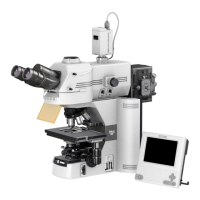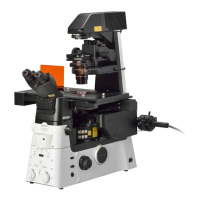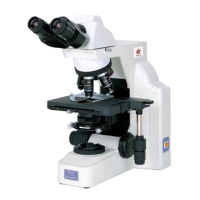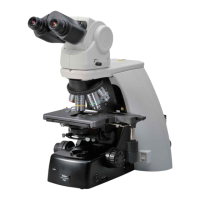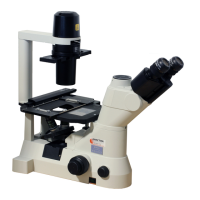Chapter 3 Individual Operations
3.16 Polarization Microscopy
48
3.16.4
Bertrand Lens Operation
The intermediate tube has the Bertrand lens. The Bertrand lens can be placed into the optical
path to perform the conoscope observation.
Setting the Bertrand lens
Put the Bertrand lens turret in the “B” position to
move the Bertrand lens into the optical path.
Put the Bertrand lens turret in the “O” position to
remove the Bertrand lens from the optical path.
Focusing and centering the Bertrand lens
The objective pupil positions vary by magnification and type. So, when objectives are switched,
the Bertrand lens must be focused for each time.
Besides, the Bertrand lens must be centered so that it is aligned to the optical path of the
objective. Note that you need not center the Bertrand lens each time if you have centered the
objective already. (P. 42)
In this adjustment, the aperture diaphragm image is used in the same manner as the condenser
lens adjustment. Do as follows:
(1) Refer to “2.1 Diascopic Bright-Field
Microscopy” to focus on the specimen. And
then, focus and center the condenser.
(2) Move the Bertrand lens into the optical path.
(3) Stop down the aperture diaphragm of the
condenser to get a diaphragm image into
view.
(4) Perform the focusing for the Bertrand lens.
Adjust the Bertrand lens focus ring on the
polarizing intermediate tube to get a clear
image of the diaphragm.
(5) Fully stop down the aperture diaphragm of
the condenser.
(6) Center the Bertrand lens. Rotate two
centering screws on the polarizing
intermediate tube so that the diaphragm
image comes to the center of the field of
view.
Bertrand lens
turret
Bertrand lens
centering screws
Bertrand lens
focus ring

